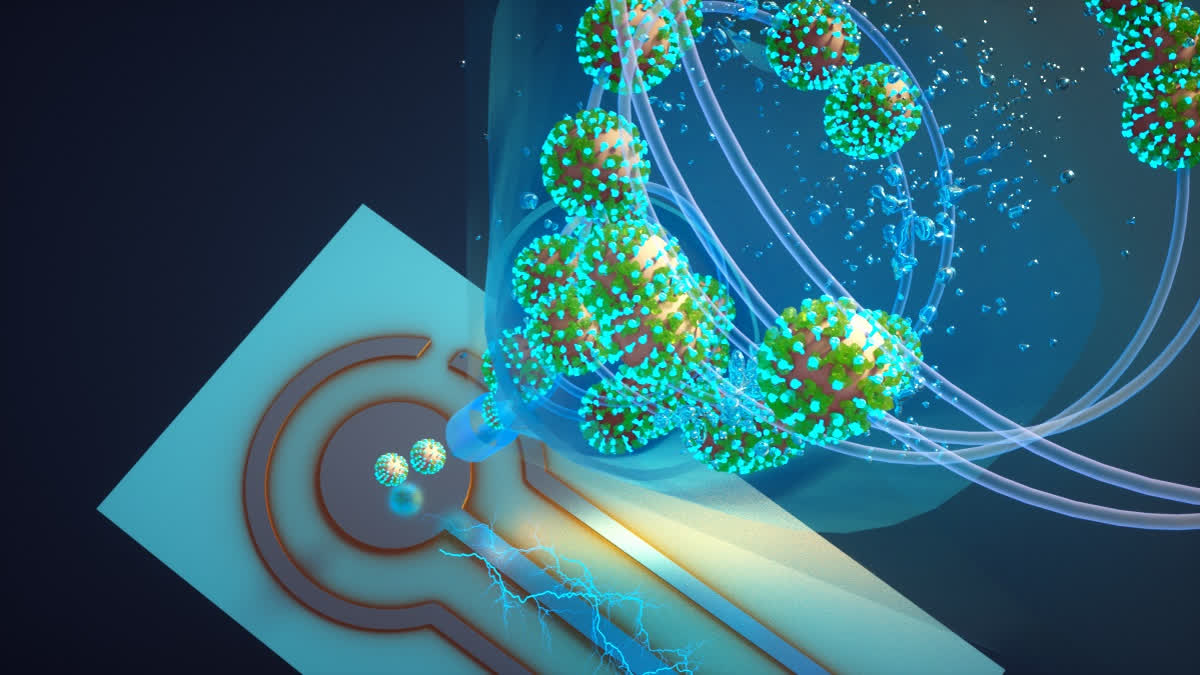New Delhi: Researchers have developed a real-time air monitor that they say can detect any of the SARS-CoV-2 virus variants in a room in about five minutes. The inexpensive, proof-of-concept device was developed by researchers at Washington University in St. Louis, US, by combining recent advances in aerosol sampling technology and an ultrasensitive biosensing technique.
The device can be used in hospitals and health care facilities, schools and public places to help detect SARS-CoV-2 and potentially monitor for other respiratory virus aerosols, such as influenza and respiratory syncytial virus (RSV). Results of their work on the monitor, which they say is the most sensitive detector available, are published in the journal Nature Communications.
There is nothing at the moment that tells us how safe a room is," said John Cirrito, a professor of neurology at Washington University. "If you are in a room with 100 people, you don't want to find out five days later whether you could be sick or not. The idea with this device is that you can know essentially in real time, or every 5 minutes, if there is a live virus," Cirrito said.
The researchers had previously developed a micro-immunoelectrode (MIE) biosensor that detects amyloid beta as a biomarker for Alzheimer's disease and wondered if it could be converted into a detector for SARS-CoV-2. To do so, they exchanged the antibody that recognises amyloid beta for a nanobody from llamas that recognises the spike protein from the SARS-CoV-2 virus.
David Brody, a former faculty member at Washington University, and an author on the paper, developed the nanobody in his lab at the National Institutes of Health (NIH). The nanobody is small, easy to reproduce and modify and inexpensive to make, the researchers said. "The nanobody-based electrochemical approach is faster at detecting the virus because it doesn't need a reagent or a lot of processing steps, said Carla Yuede, an associate professor at Washington University.
Also read: Researchers develop device to monitor, treat heart disease
"SARS-CoV-2 binds to the nanobodies on the surface, and we can induce oxidation of tyrosines on the surface of the virus using a technique called square wave voltammetry to get a measurement of the amount of virus in the sample," Yuede said. Researchers integrated the biosensor into an air sampler that operates based on the wet cyclone technology.
Air enters the sampler at very high velocities and gets mixed centrifugally with the fluid that lines the walls of the sampler to create a surface vortex, thereby trapping the virus aerosols. The wet cyclone sampler has an automated pump that collects the fluid and sends it to the biosensor for seamless detection of the virus using electrochemistry.
The challenge with airborne aerosol detectors is that the level of virus in the indoor air is so diluted that it even pushes toward the limit of detection of polymerase chain reaction (PCR) and is like finding a needle in a haystack," said Rajan Chakrabarty, a professor at Washington University. "The high virus recovery by the wet cyclone can be attributed to its extremely high flow rate, which allows it to sample a larger volume of air over a 5-minute sample collection compared with commercially available samplers, Chakrabarty said.
The team tested the monitor in the apartments of two COVID-positive patients. The real-time PCR results of air samples from the bedrooms were compared with air samples collected from a virus-free control room. The devices detected RNA of the virus in the air samples from the bedrooms but did not detect any in the control air samples. In laboratory experiments that aerosolised SARS-CoV-2 into a room-sized chamber, the wet cyclone and biosensor were able to detect varying levels of airborne virus concentrations after only a few minutes of sampling. (PTI)



